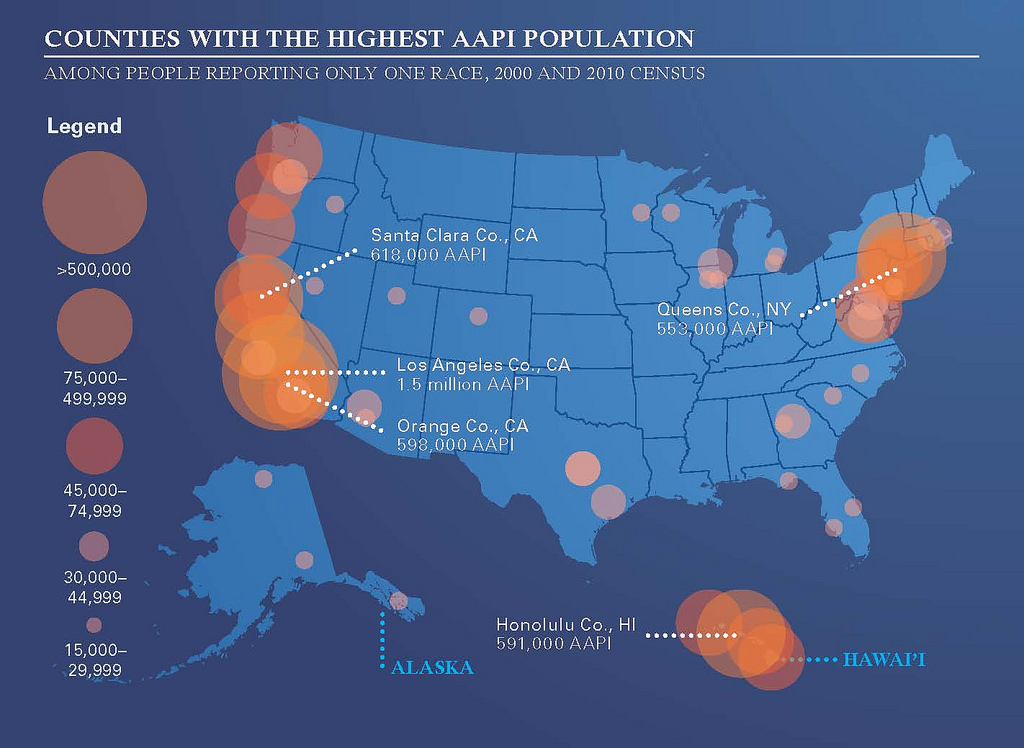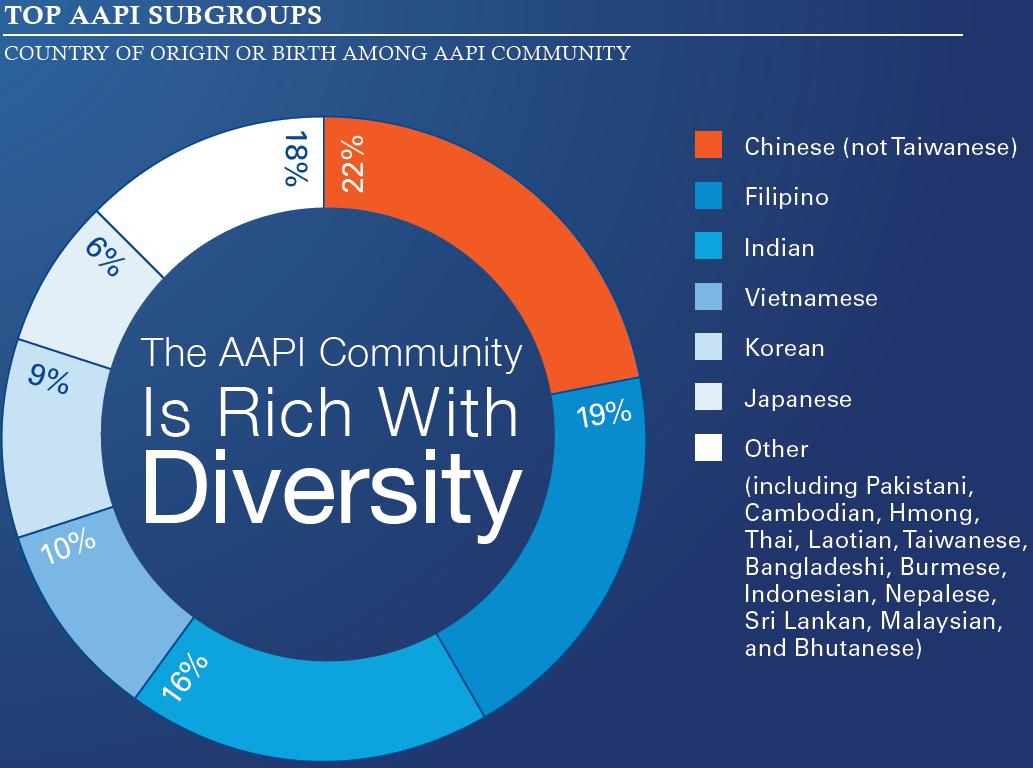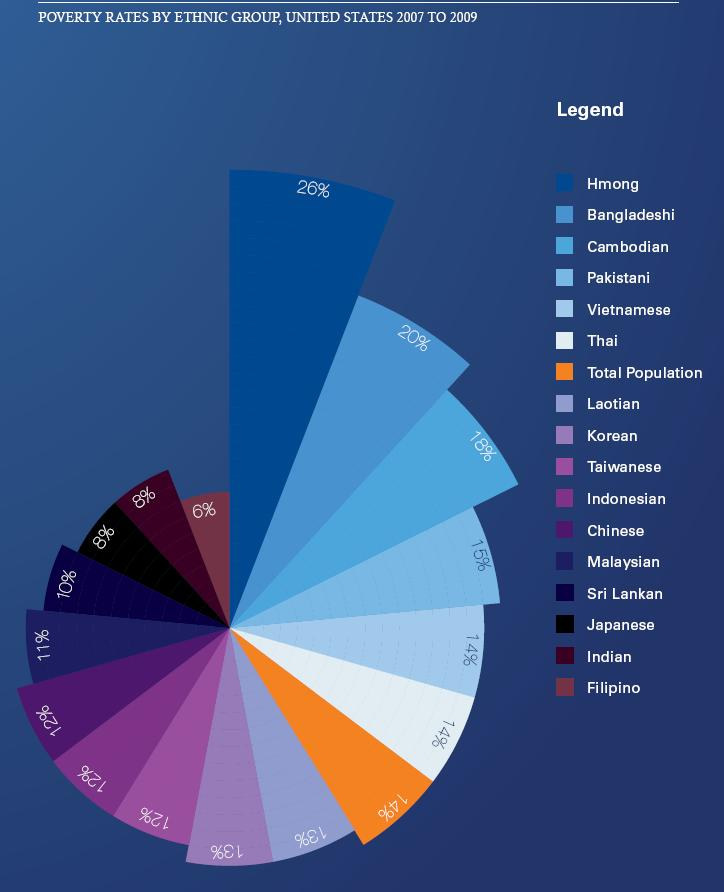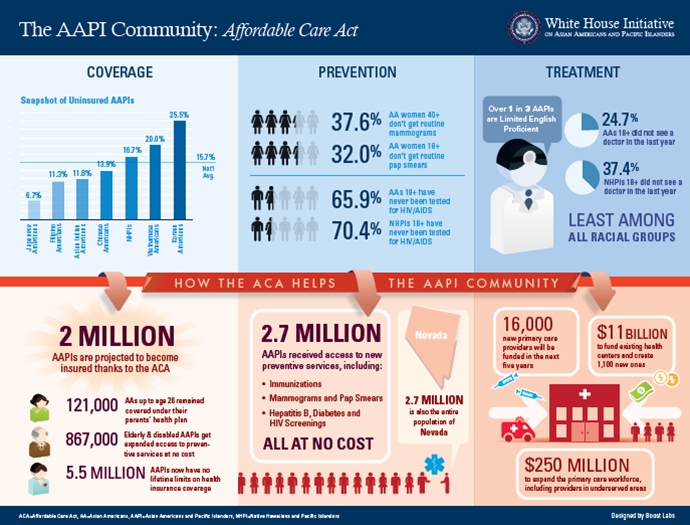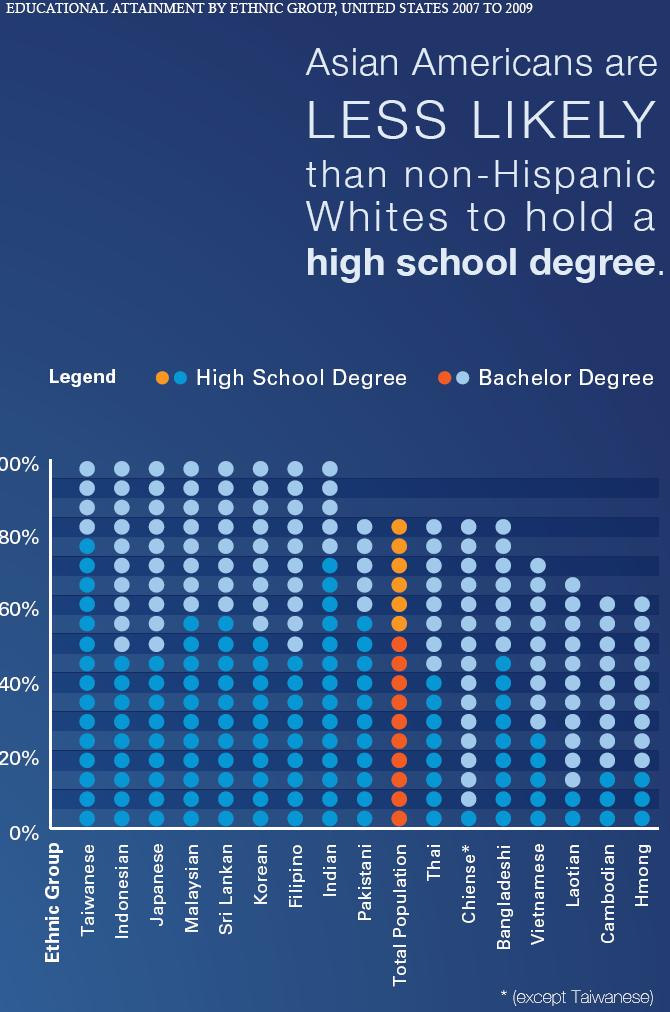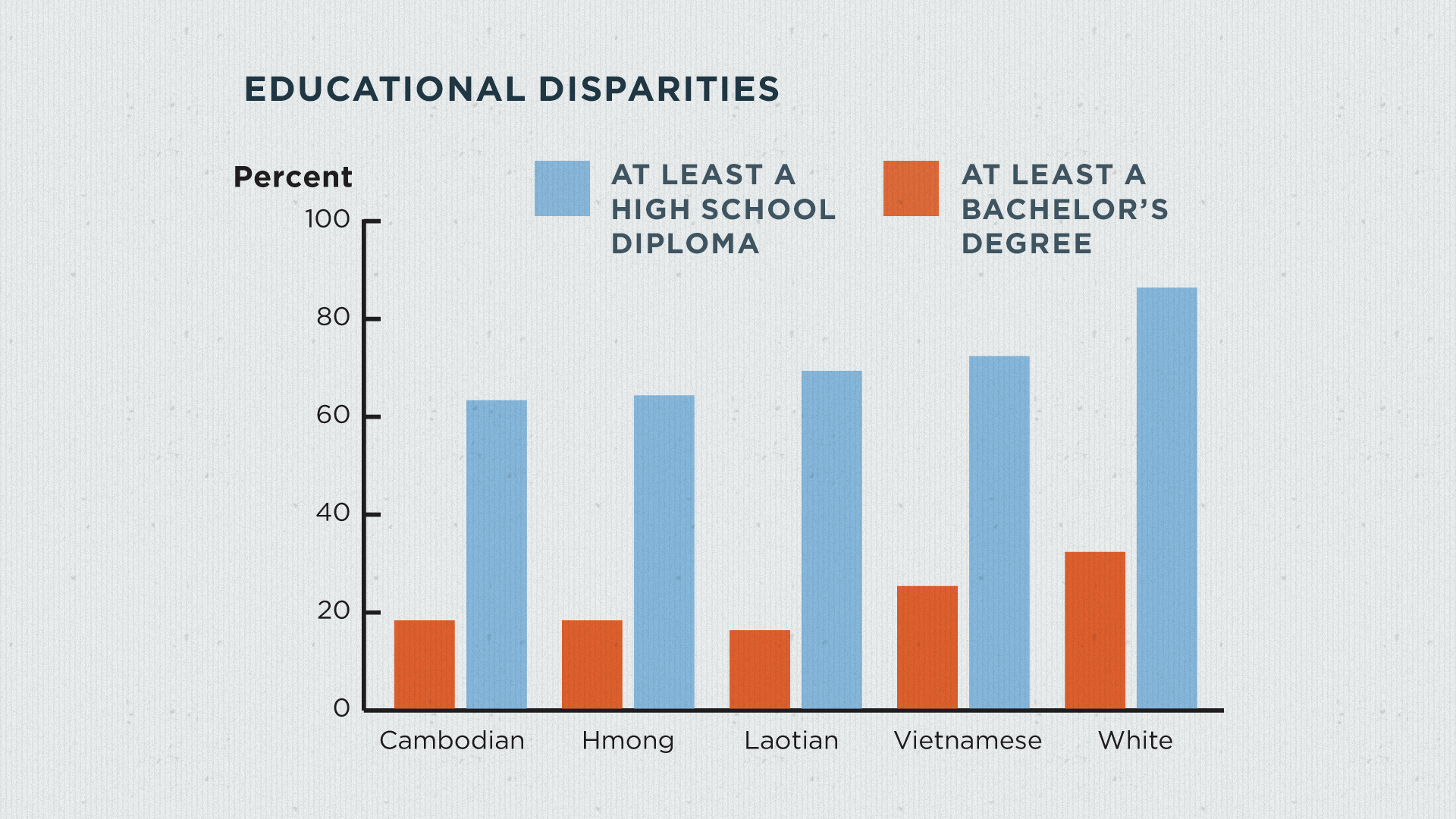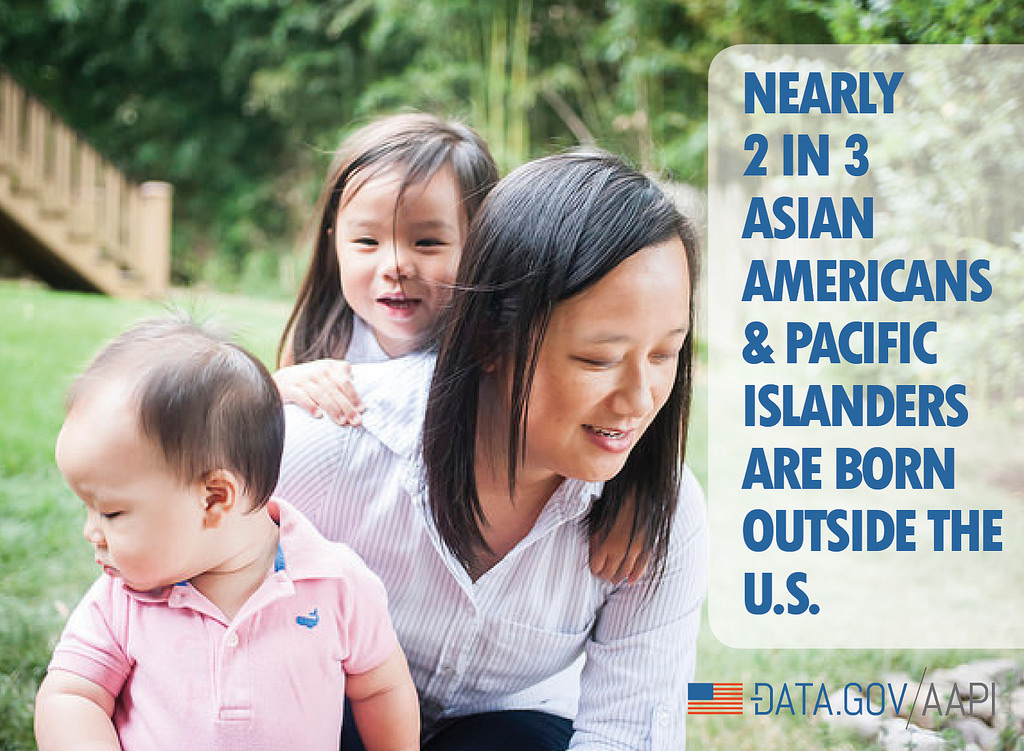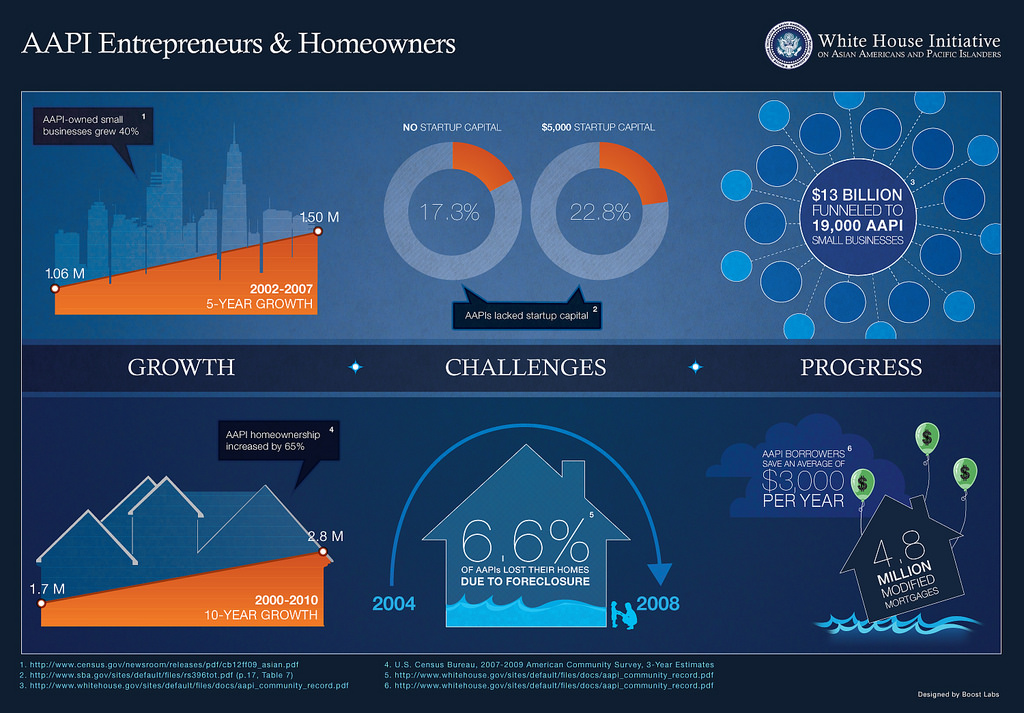Critical Issues Facing Asian Americans and Pacific Islanders
Demographics
Click image to view larger.
- Approximately 16.6 million AAPIs reside in the U.S. (Approximately 5.4% of U.S. population). i
- By 2050, AAPIs will make up 9.7% of the total United States population -- over 40 million people.ii
- AAPIs represent over 30 countriesiii and ethnic groups that speak over 100 different languages.iv
Poverty
- Asian Americans living below poverty: 12.6% (U.S. average living below poverty: 12.4%).v
- Poverty Rates of Hmong: 37.8%; Cambodian: 29.3%; Laotian: 18.5%; Vietnamese: 16.6%.vi
Health
- High rates of limited English proficiency compound the obstacles AAPIs face in achieving good health. Many AAPIs in the U.S. cannot communicate effectively with healthcare providers.
- Cancer is the leading cause of death for AAPIs.viii Cervical cancer incidence rates are among the highest in the U.S. for Laotian, Samoan, Vietnamese and Cambodian women. ix
- Hepatitis B chronically infects about 1.3-1.5 million people in the U.S., and AAPIs account for over half of the chronic hepatitis B cases and resulting deaths. x
- In Hawai’i, Asians, Native Hawaiians and other Pacific Islanders ages 20 years or older are more than two times as likely to have diagnosed diabetes as White residents of Hawai’i of similar age.xi
Education
- Nearly one out of four AAPI students is Limited English Proficient and/or lives in a linguistically isolated household where parents have limited English proficiency.xii
- The high school drop-out rate among Southeast Asian Americans is staggering: 40% of Hmong, 38% of Laotian, and 35% of Cambodian populations do not complete high school.xiii
- Only 14% of Native Hawaiians and Pacific Islanders 25 years of age and older have at least a bachelor’s degree in comparison with 27% for the total population and 49% of the AA population.xiv
Labor and Employment
- In a Gallup Poll, 30-31% of AAPIs surveyed reported incidents of employment discrimination, the largest of any group, with African Americans constituting the second largest at 26%.xv
- AAPIs only filed about 2-3% of the total employment discrimination complaints received by the Equal Employment Opportunity Commission against private employers.xvi
Immigration
- AAPIs make up one of the fastest growing racial groups in the U.S.,xvii constituting about one-third of the one million legal immigrants who enter the U.S. annually.xviii
- Nearly two-thirds of AAPIs are foreign-born. xix
Housing
- According to a study undertaken by the U.S. Department of Housing and Urban Development, one in five AAPIs experience discrimination in the rental and home buying process. xx
- AAPIs have suffered the largest percentage decline in homeownership of any racial group.xxi
i. U.S. Census Bureau News, “Facts for Features: APA Heritage Month” (March 2010).
ii. U.S. Census Bureau (2000). http://www.cnn.com/2008/US/08/13/census.minorities/index.html
iii. Over 30 Asian countries are recognized by the UN. http://unstats.un.org/unsd/methods/m49/m49regin.htm
iv. Official spoken languages of Asian countries. http://www.nationsonline.org/oneworld/asian_languages.htm
v. 2008 Report by the National Commission on Asian American and Pacific Islander Research in Education, Steinhardt Institute for Higher Education Policy, Asian/Pacific/American Institute at NYU, and College Board.
vi. Id.
vii. 2003 California Health Interview Survey. http://www.healthpolicy.ucla.edu/Pubs/PubList.aspx?subTopicID=50
viii. Office of Minority Health 2009.
ix. Miller BA, Chu KC, Hankey BF, Ries LAG. Cancer Incidence and Mortality Patterns among Specific Asian and Pacific Islander Populations in the U.S. Cancer Causes Control (2008).
x. Centers for Disease Control and Prevention (2007).
xi. National Diabetes Education Program. The Diabetes Epidemic among Asian Americans and Pacific Islanders, adapted from National Institute of Diabetes and Digestive and Kidney Diseases. National Diabetes Statistics fact sheet: general information and national estimates on diabetes in the United States, 2005. Bethesda, MD: U.S. Department of Health and Human Services, National Institute of Health, 2005.
xii. Randolph Capps, et al. The New Demography of America’s Schools: Immigration and the No Child Left Behind Act, Urban Institute (2005).
xiii. 2006 American Community Survey.
xiv. UCLA Asian American Studies Center, Census Information Center, Pacific Islanders Lagging Behind in Higher Educational Attainment (2006).
x. vhttp://www.eeoc.gov/eeoc/newsroom/release/12-8-05.cfm
xvi. Id.
xvii. U.S. Census Bureau News, “Facts for Features: APA Heritage Month” (March 2010).
xviii. http://www.migrationinformation.org/Feature/display.cfm?ID=414
xix. U.S. Census Bureau News, http://www.nytimes.com/2010/01/22/us/22census.html
xx. http://www.huduser.org/portal/publications/hsgfin/hds.html
xxii. Alex Veiga. Associated Press, “Homeownership fell in '08; Asians hit worst,” 09/21/2009.
